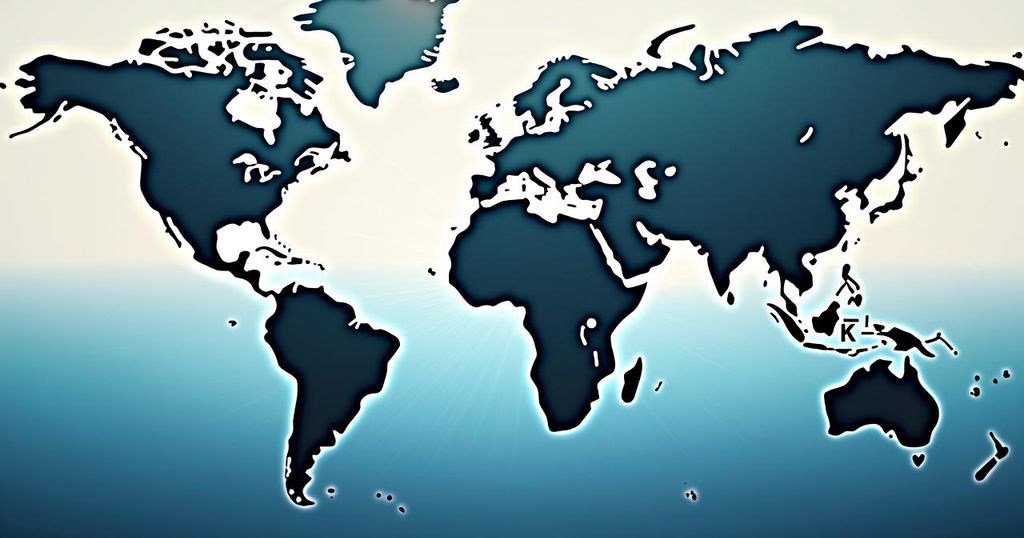The United Nations has warned that climate change is causing the global water cycle to become increasingly erratic, resulting in severe floods and droughts. The World Meteorological Organization’s report notes the driest conditions for rivers in over 30 years, significant glacier melt, and alarming projections of water scarcity affecting billions. The report calls for enhanced monitoring and urgent action to stabilize climate conditions and manage water resources effectively.
The United Nations has issued a grave warning regarding the increasing erraticism of the world’s water cycle, attributing this alarming trend to the ramifications of climate change. The World Meteorological Organization (WMO) highlighted in its recent report that last year witnessed the driest conditions for global rivers in over three decades while simultaneously experiencing substantial flooding incidences. According to WMO Secretary-General Celeste Saulo, these extreme climatic events serve as significant indicators of an impending crisis, underscoring the critical role of water as both a resource and a warning signal of climatic instability. Saulo articulated, “Water is the canary in the coalmine of climate change,” emphasizing that the disturbing fluctuations in rainfall patterns bear significant consequences for humanity, ecosystems, and economies alike. The previous year was recorded as the hottest in history, marked by excessive heat and prolonged droughts. However, it also saw numerous flooding incidents, which the WMO attributes not only to natural climatic phenomena such as La Niña and El Niño but increasingly to anthropogenic climate change. The warming atmosphere facilitates greater moisture retention, leading to heavier rainfall, while rapid evaporation exacerbates drought situations. Currently, 3.6 billion individuals experience insufficient access to fresh water on a monthly basis, a grim statistic projected to worsen, affecting over five billion persons by 2050. Africa has faced the most significant impacts, most notably in Libya where floods resulted in catastrophic dam collapses, claiming over 11,000 lives. The report underscores a concerning trend where over half of the global river catchments have experienced drier-than-usual conditions in recent years. Additionally, the unprecedented melting of glaciers, losing more than 600 billion tonnes of water within the last year, threatens long-term water security for millions of people. In response, the WMO underscores the urgent need for enhanced monitoring of water resources and improved infrastructure to mitigate potential hazards. Saulo stressed, “We cannot manage what we do not measure,” advocating for comprehensive strategies to address water scarcity, particularly in agriculture, which accounts for 70 percent of global freshwater consumption. The daunting challenge remains to stabilize the climate, a pressing endeavor for future generations.
The issue of the world’s water cycle becoming increasingly erratic is fundamentally linked to climate change, which has profound implications for both natural ecosystems and human societies. The erratic patterns of rainfall, resulting in extreme flooding and droughts, pose critical risks to water security, agriculture, and overall ecological balance. Additionally, these changes are anticipated to lead to significant socio-economic impacts, particularly in regions that are already vulnerable to climate variability. The insights provided by the United Nations’ World Meteorological Organization serve to highlight the urgency of addressing these challenges through enhanced monitoring, policy reform, and infrastructural investments.
In summary, the United Nations has raised alarms about the troubling changes in the global water cycle, closely tied to ongoing climate change. The staggering statistics of water access, coupled with the rising incidences of extreme weather events, underscore the necessity for immediate action. It is crucial for nations to enhance their monitoring capabilities and take actionable steps towards mitigating the impacts of climate change on water resources, as the future stability of global water availability hinges on these interventions.
Original Source: phys.org






